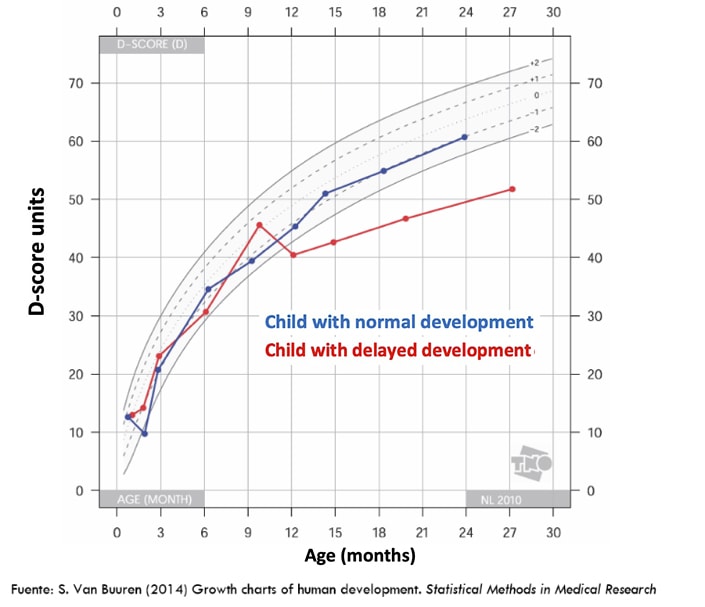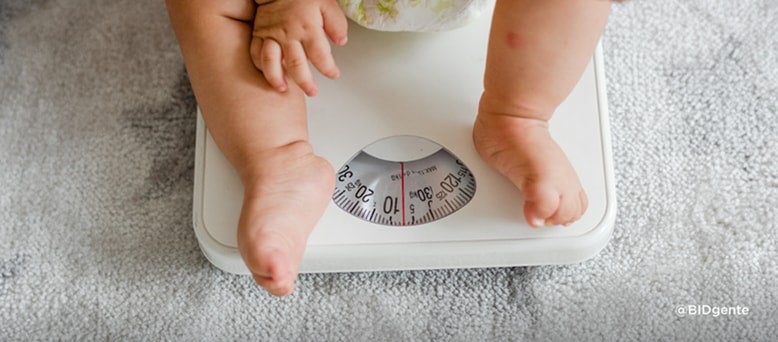The COVID-19 pandemic has brought unprecedented challenges and new perspectives for early childhood agendas, including efforts to measure children’s development, which are more pressing now than ever. This post gives an update on some of these efforts in the midst of the emergency. In addition, we introduce an innovative child development curve that uses a common scale for all age ranges, allowing comparisons across ages and countries.
The Importance of Indicators
Having population-level child development indicators that are reliable, valid, and free and that can be compared within and between countries is a major challenge and a much sought-after goal. These indicators are meant to answer questions like: How do child development levels in my country compare to those of other countries in my region? Which population groups are more at risk and should be the target of interventions? How do public policies or programs, or health and economic crises like the one we are experiencing, affect children’s development?
Joining forces: the GSED Group
In a previous post, we wrote about the GSED (Global Scale for Early Development) Group, an innovative initiative involving numerous experts who have been working together under the World Health Organization’s leadership since 2018. The Group is currently finalizing instruments for measuring development in children under 36 months of age: a short form for population monitoring, a longer form for evaluating the impact of interventions, and an additional module (psychosocial scale) to measure behavior and possible indications of psychosocial stress and other symptoms of deteriorated mental health in children. These instruments are designed to be applicable globally, that is, in countries of all income levels and across cultures. This work rests on a solid empirical foundation: statistical methods were applied to a rich and harmonized database with 2275 child development items, which were measured using up to 22 different instruments on over 73,000 children in 51 cohorts in 31 countries.
On July 8, the Group presented its progress on instrument development and an App for data collection. It also shared the results of the first test runs in Bangladesh, Pakistan, and Tanzania, as well as plans for a more extensive validation exercise in these countries and in three additional ones: Brazil, Ivory Coast, and the Netherlands. The aim is to conduct the validation over the course of 2021. By then, final versions of the instruments will be available together with all materials needed for their use, including administration and training manuals, visual aids, and a description of materials for administration of the long form. The GSED Group is switching to a virtual or semi-virtual mode to train people on how to administer the instruments and is adjusting its work strategy to the mobility and physical distancing limitations resulting from the pandemic.
Creating child development curves
One of this initiative’s richest aspects is how it uses a shared metric to convert scores from development instruments into an interpretable and internationally comparable metric: the D-score. This score is to child development what centimeters are to measuring height. It is an interval scale that, based on each child’s scores, can be used to create a child development curve with a common axis for all age ranges—the age-adjusted D-score, also called the DAZ (Development-for-Age Z-score). This curve would be the child development equivalent of the height and weight curves that pediatricians around the globe use to monitor children’s growth. DAZ would be akin to height-for-age. With data from sufficiently diverse countries, this method will allow researchers to develop benchmarks (or cutoff points) to identify children who are developing well versus those lagging behind or at risk of developmental delay. To continue the height analogy, these benchmarks would be equivalent to the chronic malnutrition indicator.

This work gives us very useful tools like a package in r-project (and related documentation) that can be used to calculate the D-score and development curve from data collected using several other instruments (for example, the Bayley Scales or the Ages and Stages Questionnaire). There is also a web application that calculates the D-score and curve in just one click! All you have to do is enter the children’s item responses and the application automatically generates the D-score and DAZ.
Collaborative and coordinated work is the best way to reinforce our understanding of child development in the region and in the world, as well as to acquire more knowledge on the feasibility and validity of instruments with a global reach. At the IDB, we applaud the GSED Group’s progress and continue working to support it and facilitate the use of the instruments in Latin America and the Caribbean.
Are you aware of other coordinated efforts on child development measurement? What needs to happen for countries in the region to be able to join this type of initiatives? Share your thoughts in the comments section or mention @BIDgente on twitter


I read the article and I have a question for you. What are the challenges and solutions for early childhood measurement agenda?
Regards,